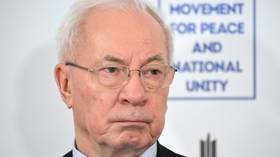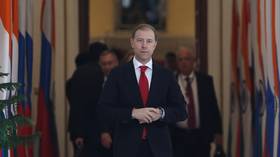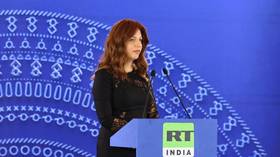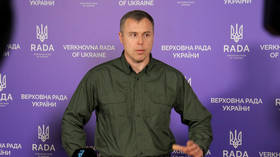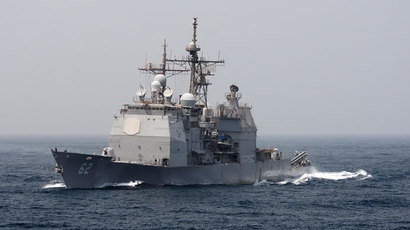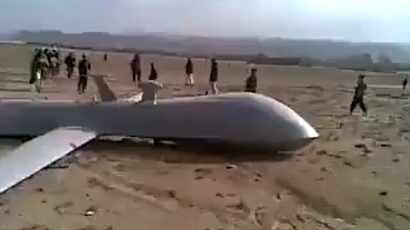UN: Afghan conflict 'changes nature' leading to civilian death surge in 2013
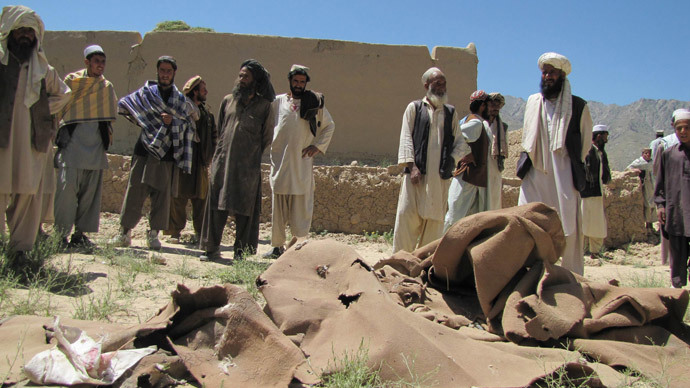
Civilians in Afghanistan suffered a heavy toll last year with total casualties jumping 14 percent, as fighting intensified between government troops and insurgents, the United Nations said in a report on Saturday.
The Afghan government, left to clean up the mess following the
withdrawal of foreign troops from its territory, finds itself
under increasing attack by insurgents, and the fighting partially
accounts for last year's dramatic surge in casualties, according
to the report.
The report pointed to the use of improvised explosive devices
(IEDs), discharged by rebel forces in places where large numbers
of civilians gather, such as markets and roadsides. Explosive
devices accounted for about one-third of the total civilian toll,
which the UN Assistance Mission for Afghanistan (UNAMA) put at
2,959 deaths and 5,656 wounded in its report.
The relentless violence in Afghanistan has made 2013 one of the
deadliest years of the 12-year war for civilians.
Tragically, the rise in civilian casualties from ground fighting
includes an “alarming increase in women and children
casualties, reflected the changing dynamics of the conflict over
the year," the United Nations said.

Last year ranked the worst for women and children since 2009,
with the number killed or injured by the ongoing violence
increasing by more than one-third from 2012.
"It is the awful reality that most women and children were
killed and injured in their daily lives — at home, on their way
to school, working in the fields or travelling to a social
event," said Georgette Gagnon, director of human rights for
the UN mission.
Meanwhile, attacks targeting mullahs and places of worship
tripled in 2013. UNAMA listed 27 incidents in which persons or
places of worship, including mosques, were directly threatened or
attacked, resulting in 18 civilian deaths and seven wounded.
The report pointed to the changing dynamics of the war in
Afghanistan as a leading cause of the uptick in civilian
casualties.
"This 'fog of war' dynamic reflects the changed nature of the
conflict in Afghanistan in 2013 which was increasingly being
waged in civilian communities and populated areas," the
United Nations said.
While both sides in the conflict were responsible for the
increase in casualties last year, the UN blamed around 75 percent
of the casualties on the Taliban.

"Statements on protecting civilians by the Taliban leadership are not nearly enough to end the killing and injuring of innocent Afghan civilians," UN Special Representative Ján Kubis said in a statement.
"What is needed is for the Taliban to stop deliberately
attacking civilians and using IEDS indiscriminately."
International forces, however, were responsible for about 3
percent of casualties, according to the report.
The UN report said that there were 54 aerial operations – 19 by
unmanned aerial drones - that resulted in civilian casualties.
The number of civilian deaths from these drone strikes has more
than tripled from 2012, the report said.
Meanwhile, the level of growing mistrust between the Afghan
government of President Hamid Karzai and Washington was amplified
last month following hints by the Afghan leader that the United
States has played some kind of role in recent insurgent attacks
in Afghanistan.
An anonymous Afghan official, quoted by the Washington Post last
month, said Karzai believes that “dozens of attacks blamed on
the Taliban” have actually been planned by the US to weaken
his government.

The official admitted that Karzai had no hard evidence of such US
involvement in any attack.
US Ambassador to Afghanistan, James B. Cunningham, told the Post
that Karzai's alleged ideas represented "a deeply
conspiratorial view that's divorced from reality ... It flies in
the face of logic and morality to think that we would aid the
enemy we’re trying to defeat."
The comments reflect deepening tensions between Washington and
Karzai, who continues to refuse to grant the US troops remaining
in Afghanistan immunity from prosecution in the country’s courts.
The issue continues to impede the signing of a tentative security
agreement between the two countries.
Karzai seems content to leave the issue for his successor
following Afghanistan's April presidential election.
This week, Karzai confirmed he is engaged in secret talks with
the Taliban, which reportedly wants to join the Afghanistan peace
process.
Karzai’s spokesperson confirmed to Reuters on Tuesday that
government representatives had been in negotiations with the
Taliban and the results were promising.
“I can confirm that ... Taliban are willing more than ever to
join the peace process,” Aimal Faizi said. “Contacts
have been made and we are also in touch with them.”



